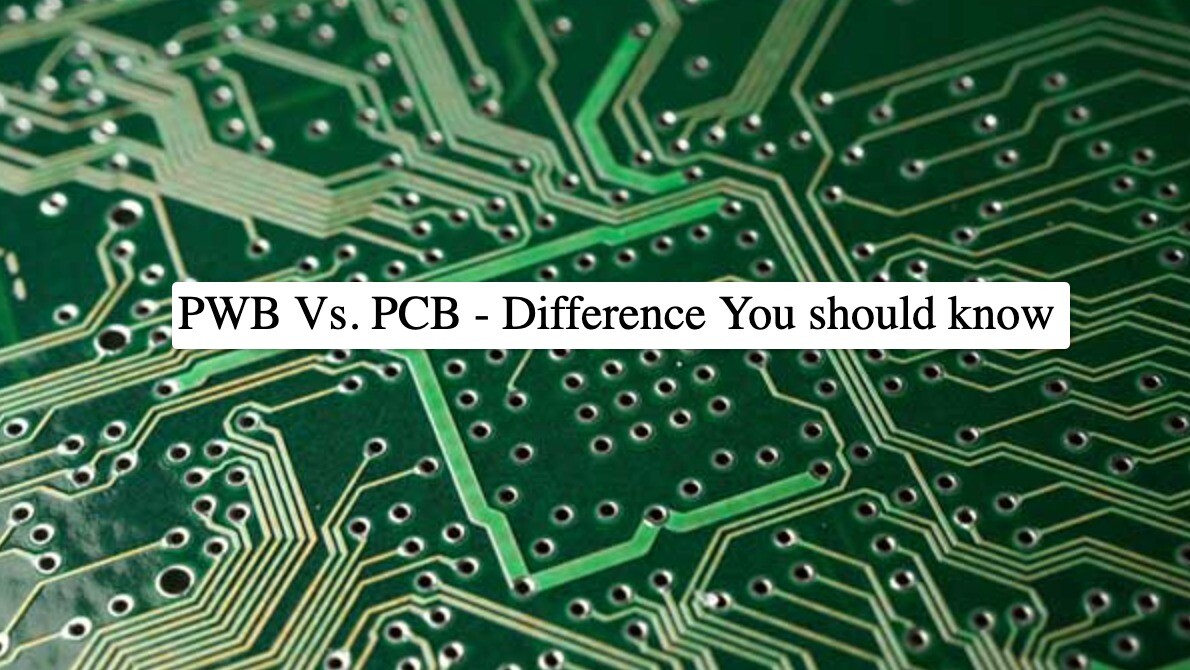
PWB Vs. PCB – Difference You should know
The field of electronics is intricate, where several phenomena exist in the field. Using abbreviations and acronyms, especially three-lettered ones, can be problematic to students and professionals of the field as they can create confusion.
The short forms, i.e., PWB are PCB, are very common in use, particularly in the field of electronics production and designing. Therefore, a transparent understanding of the meaning of them both is necessary for us to know. Along with the lucid definition, you shall get an elaborate comparison between the two terms and phenomena in this article.
[wpi_designer_button twin_id=2164]
What is PWB?
PWB is a short form standing for the Printed Wiring Board. The PWB technology includes an epoxy glass substrate that’s utilized in making interconnections and attaching elements to achieve an electronic circuit that’s useful in making electronic devices. The PWB-manufacturing process is achieved by etching away materials to bear, conduction-insulating surfaces in-between conduction-enabling traces.

Image of a PWB
What is PCB?
PCB is an abbreviation for . This word is often used to refer to a technology that allows the conductor to run from one side of the board to the opposite side and from one layer to another one. Also, complex printed circuit boards are designed to add functionality and utility to the circuit instead of simply making connections from one point to another. PCBs are fully component-enabled. They have electrical components for their work.

Image of a PCB
Also read:- PCB Schematics vs PCB Designs
PWB Vs. PCB Comparison
When comparing PWB vs. PCB, the biggest distinction is that PCB refers to a board with the whole circuitry, whereas PWB means a board without components. This implies that PCBs are finished circuit boards that are ready for installation in the electronic device. The term PWB is used to indicate the rudimentary production of the circuit board or the use of circuit boards in electronics that do not require complex functionality.
The use of the two words varies from one place to another. For example, within the electronics production industry within the United States of America, the two terms are interchangeable.
The term Printed Wiring Board was used in the early days when electronics were in their infantile stage. Throughout the industry’s beginning time, the name PWB was found appropriate to be used as a result of the connections on the boards were solely from one point to another.
The compound noun ‘printed circuit board’ was introduced later on when the circuit board technology reached more advanced levels. Initially, the compound noun was restricted in internal use; the term ‘circuit’ was useful as the PCB offered more complex functions. However, with the advancement of technology, the term PCB reached the general population, and PWB is now more restricted in electronics preproduction.
PWB is the design substrate with no component fitted on it. Apart from the etching bit, the PWBs also have openings for electrical components to be soldered in and through them. Apart from fitting the electrical components, a PWB must go through a series of chemical and physical processes to be finalized into PCBs. This resulted from the design of a printed circuit board that plays a significant role in deciding the course’s functionality.
Read more :- Rado Watches first Copy
Conclusion
Usage of printed wire boards vs. printed circuit board greatly varies from one region to another. For example, within the United States of America, the compound noun ‘printed circuit board’ is widespread, whereas PWB is equally commonly used in Japan. In Japan, PWB is commoner than PCB since it prevents confusion with another name, like polychlorinated biphenyls, which refers to a type of poison commonly available in the country.
[wpi_designer_button twin_id=2164]

